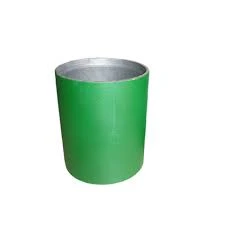- Afrikaans
- Albanian
- Amharic
- Arabic
- Armenian
- Azerbaijani
- Basque
- Belarusian
- Bengali
- Bosnian
- Bulgarian
- Catalan
- Cebuano
- Corsican
- Croatian
- Czech
- Danish
- Dutch
- English
- Esperanto
- Estonian
- Finnish
- French
- Frisian
- Galician
- Georgian
- German
- Greek
- Gujarati
- Haitian Creole
- hausa
- hawaiian
- Hebrew
- Hindi
- Miao
- Hungarian
- Icelandic
- igbo
- Indonesian
- irish
- Italian
- Japanese
- Javanese
- Kannada
- kazakh
- Khmer
- Rwandese
- Korean
- Kurdish
- Kyrgyz
- Lao
- Latin
- Latvian
- Lithuanian
- Luxembourgish
- Macedonian
- Malgashi
- Malay
- Malayalam
- Maltese
- Maori
- Marathi
- Mongolian
- Myanmar
- Nepali
- Norwegian
- Norwegian
- Occitan
- Pashto
- Persian
- Polish
- Portuguese
- Punjabi
- Romanian
- Russian
- Samoan
- Scottish Gaelic
- Serbian
- Sesotho
- Shona
- Sindhi
- Sinhala
- Slovak
- Slovenian
- Somali
- Spanish
- Sundanese
- Swahili
- Swedish
- Tagalog
- Tajik
- Tamil
- Tatar
- Telugu
- Thai
- Turkish
- Turkmen
- Ukrainian
- Urdu
- Uighur
- Uzbek
- Vietnamese
- Welsh
- Bantu
- Yiddish
- Yoruba
- Zulu
aluminum pipe couplings and fittings
Aluminum Pipe Couplings and Fittings A Comprehensive Overview
Aluminum pipe couplings and fittings play a crucial role in various industries, serving as essential components for connecting, regulating, and directing the flow of fluids or gases within piping systems. Known for their lightweight, durability, and resistance to corrosion, aluminum fittings are increasingly favored over traditional materials like steel and iron. This article provides insight into the key features, advantages, applications, and considerations when choosing aluminum couplings and fittings.
One of the standout features of aluminum pipe couplings and fittings is their lightweight nature, which simplifies installation and transportation. Unlike heavier materials, aluminum allows for easier handling and reduced labor costs. This makes aluminum fittings particularly appealing in applications where weight is a critical factor, such as in aerospace or automotive industries.
Corrosion resistance is another significant benefit of aluminum fittings. Unlike steel, which can rust and deteriorate over time, aluminum forms a protective oxide layer when exposed to air, preventing corrosion. This property makes aluminum pipe fittings an ideal choice for environments where moisture or harsh chemicals are present, such as in marine applications or chemical processing plants.
Aluminum fittings are available in various shapes and sizes, including elbows, tees, reducers, and flanges, making them versatile in application. They can be used in plumbing, HVAC systems, and even in food and beverage industries, where hygiene and resistance to contamination are paramount. Additionally, their compatibility with a wide range of pipe sizes allows for easy integration into existing systems, further enhancing their appeal.
aluminum pipe couplings and fittings

Another important aspect of aluminum couplings and fittings is their strength-to-weight ratio. Although aluminum is lightweight, it can withstand significant pressure and mechanical stress, making it suitable for high-performance applications. However, it is vital to consider that while aluminum is strong, it may not be as strong as steel, particularly in high-stress environments. Therefore, understanding the specific requirements of a project is essential when selecting the right material.
When installing aluminum fittings, there are important considerations to ensure longevity and reliability. First, proper sealing techniques should be used to prevent leaks, especially in high-pressure systems. Popular sealing methods include the use of O-rings, thread sealants, or gaskets, depending on the application.
Moreover, care should be taken to avoid galvanic corrosion, which can occur when aluminum is in contact with dissimilar metals in the presence of an electrolyte. To mitigate this risk, isolating methods, such as using plastic spacers or coatings, are recommended.
In summary, aluminum pipe couplings and fittings offer a lightweight, corrosion-resistant, and versatile solution for numerous industrial and commercial applications. Their unique properties make them an ideal choice where durability and efficiency are paramount. By understanding their advantages and considerations, engineers and technicians can effectively harness the benefits of aluminum fittings in their piping systems, ensuring optimal performance and longevity.
-
Tubing Pup Joints: Essential Components for Oil and Gas OperationsNewsJul.10,2025
-
Pup Joints: Essential Components for Reliable Drilling OperationsNewsJul.10,2025
-
Pipe Couplings: Connecting Your World EfficientlyNewsJul.10,2025
-
Mastering Oilfield Operations with Quality Tubing and CasingNewsJul.10,2025
-
High-Quality Casing Couplings for Every NeedNewsJul.10,2025
-
Boost Your Drilling Efficiency with Premium Crossover Tools & Seating NipplesNewsJul.10,2025







